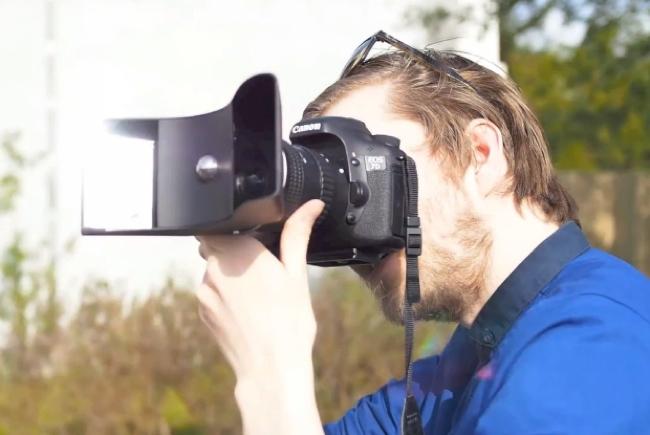
Think you have to buy specialty equipment to create 3D photos and videos? Not with the Kúla Deeper, a simple DSLR accessory that adds on to your 2D lens, letting you create stereoscopic images using mirrors.
Here’s how it works: The Deeper frame consists of mirrors that turn a single view into two side-by-side images. The device attaches easily to the front of the lens via an adapter ring, and once a 3D image is shot, you can view it immediately on the camera’s LCD via a stereoviewer, as there’s no in-camera processing necessary.

The reason why it’s called the Deeper is that “the distance between the mirrors is more than between your eyes, resulting in deeper images than what you experience in real life,” according to Kúla.

The Deeper isn’t just about the hardware however, as Kúla has also developed post-editing software to go with it, called the Kúlacode. With it, you can convert the stereoscopic image or video into the 3D format you’d like to view it, such as “old timey” anaglyph red/cyan glasses, cross-eyed (like those 3D wall arts that were so popular in the 1990s), or MPO for 3D-capable televisions.
With funding from the Icelandic Technology Development Fund, Impra – Innovation Center Iceland, and the Ministry of Welfare, Kúla was able develop the hardware and software. “The prototype is great, the software is running smoothly, and now we want to make Deeper available for everyone. Sourcing of components is in place and Deeper is ready for manufacturing,” Kúla says.

To produce the product, Kúla is turning to crowdfunding to help fund the project, and it’s using Iceland’s Karolina Fund. For €59, backers will get the Deeper, a custom stereoviewer, and anaglyph glasses (other funding options are also available). As of today, the project has raised only €4,881 of its €55,000 goal, but there’s still 34 days left.
The problem with 3D is that there’s very little content available. Hopefully low-cost accessories like the Kúla Deeper can make more content available, and give us a reason to purchase a 3D TV.
(Via PetaPixel)


